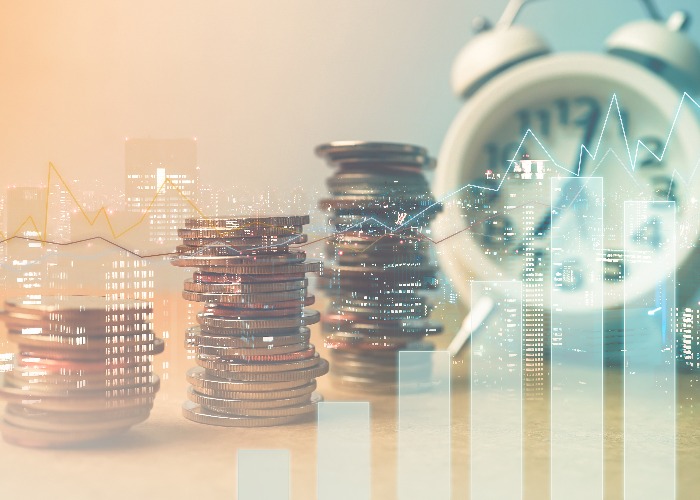Investing: why going long-term leads to better returns from stocks and shares

Shares and funds may have plummeted, but many of those who invested a few years ago are still quids in.
There’s no doubt that it has been a testing time for investors.
Covid-19 has had a huge impact on the value of stock markets across the globe, as well as wreaking havoc over our daily habits.
But the last few months have also reminded us all of the importance of taking a more long-term approach with our portfolios, and resisting the urge to panic buy and sell when things get a little rocky.
Coronavirus: world's worst-hit economies
Going global
New data from Morningstar, looking at global funds, demonstrates this point clearly.
On average, funds within its global large-cap equity fund sector had a torrid time in February and March, as it became clear that Coronavirus was going to be changing our way of life.
The typical fund within this sector dropped by 20% during this time, while average global trusts saw even more dramatic falls, plummeting by almost 27% over the same period.
I remember that time well, looking at my pension statement through my fingers, to be met by a sea of red. After all, it wasn’t just global funds and trusts that endured these difficulties ‒ no matter what you had invested in, chances are it was falling in value.
And as a result, plenty of us had that nagging feeling that we needed to do something, take some form of action to stem the tide, and perhaps sell up from those stocks, shares and funds that were seeing the most dramatic falls.
But the data since then shows that such a short-term approach would have been a mistake, as since 23rd March the average trust is up by 27% and the average fund is up by 25%.
In other words, the sharp losses seen when Coronavirus landed have already been recouped by investors who held their nerve.
And when you look over an even longer period, the growth figures are significant.
Over the last 12 months, global trusts are up by 5.4%, while funds are up 14.7%, while over a five-year period those figures jump to 53.40% and 77.90% respectively.
Don't run out of cash in retirement: reader Fisher Investment's guide to retiring comfortably
Don’t throw me off course
Of course, not all investments have replicated the success of global funds and trusts – the exposure that these investments have to the US market, in particular, has contributed to their massive returns.
But it’s not like the US market hasn’t also been shaken by all sorts of dramas and crises over the last five years, which will have led to short-term drops in value of stocks and shares.
The point is that they were just short term.
Things may seem dicey at the moment, but they will improve.
If you invest in the right places and then hold your nerve when things get shaky, then over the long term you will see far greater returns than chopping and changing, panicking any time you hit a bump in the road.
The trick then becomes working out where those right places to invest are.
Going active

A big decision for many investors will be whether to go for an actively managed fund, or to rely on index trackers.
Advocates for the top-performing global funds and trusts point to how active their managers are as a reason for their sterling results, and it’s true that if you happen to land on a fund with a quality manager, who is on top of their game, then you may end up with phenomenal returns.
The counter to that is that if the fund isn’t managed well, you end up paying large fees for substandard performance. And if things go really badly wrong, then you end up massively out of pocket.
Speaking as an investor who got their fingers burned by the Neil Woodford fiasco, I know that I am now even warier about gambling with active management.
That’s why monitoring performance is so important, such as by following reports like the ‘Spot the Dog’ study issued twice a year by BestInvest to identify the absolute pig funds that you don’t want to be anywhere near.
The truth is that if you want to go with an active fund, you need to understand exactly what that manager is going for, and buy into their approach. You also need to make sure you’re getting value for money on the fees you’ll inevitably be paying.
Don't run out of cash in retirement: reader Fisher Investment's guide to retiring comfortably
Slow and steady
The alternative approach is one that I prefer, to be honest.
Rather than putting my faith in a fund manager to make the right calls and identify the firms set to see strongest growth, I opt for the slow and steady returns on offer from index trackers.
These funds attempt to replicate the performance of an overall index, rather than outright beating it. It means that you give up the potential for extraordinary gains, but you should also never end up too far off the overall performance of the index.
The other big selling point is that as they aren’t actively managed, the fees are much smaller. So you get consistent results, and don’t have to pay through the nose for it either.
No matter what investment you go for, there are certain questions you need to answer, covering everything from the costs involved to the level of risk. Here’s our round up of the key investment questions you have to ask.
Comments
Be the first to comment
Do you want to comment on this article? You need to be signed in for this feature